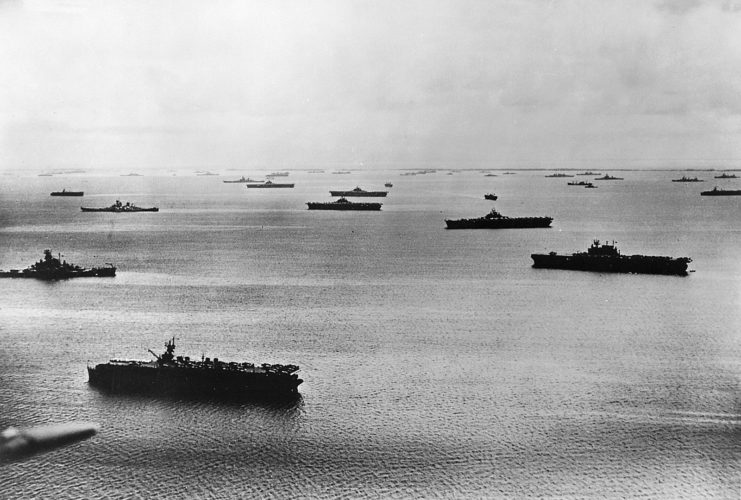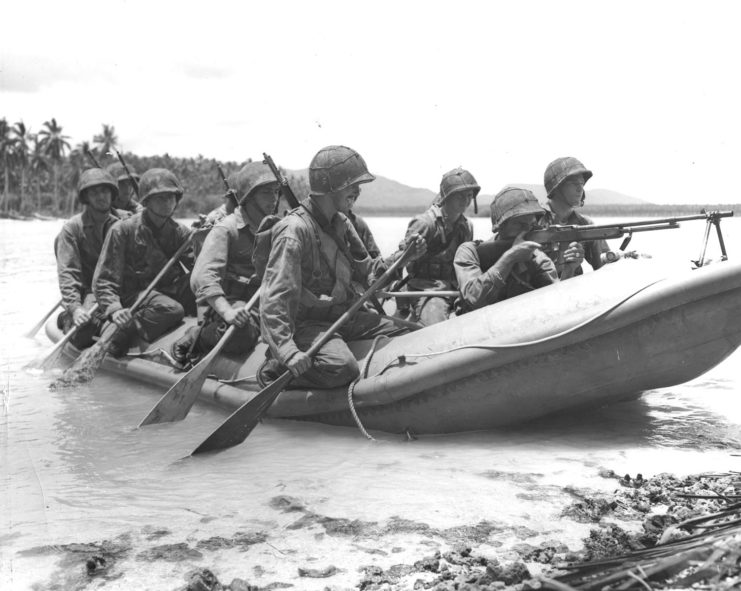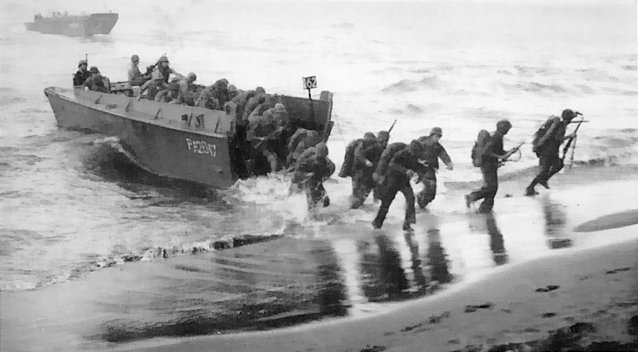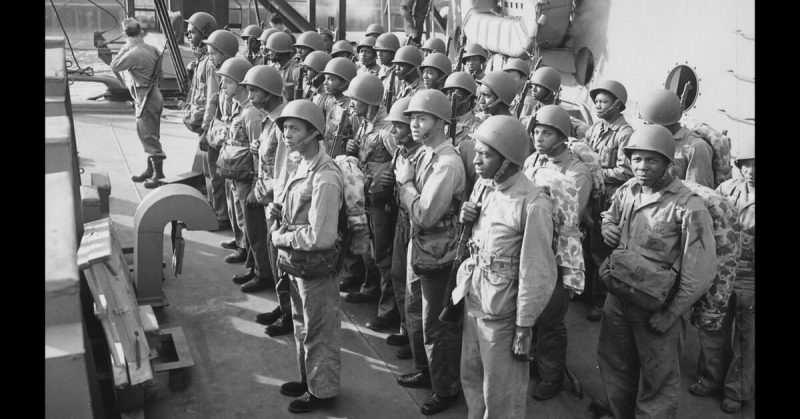US Marines played a huge part in WWII in the Pacific. Their daring and discipline were the foundation on which many Allied victories were built.
Focusing on their actions on land overlooks the other side of a Marine’s life. Away from the action and in the build-up to battles, they spent a lot of time on board ships.
Sea Sickness and Long Journeys
Many young men joined the Marines at the outbreak of WWII. They chose that unit for the chance to fight the Japanese and serve their country, not out of an attraction to the sea. Many had never even been on a ship.
For many, their first journey to war was also their first encounter with sea sickness. The heads, or shipboard toilets, were filled with vomit as men learned the hard way what the sea could do to a land-living man.
The situation was made worse by storms and long voyages. The journey across the Pacific from America was a long one. The need to avoid submarines added to its length, as ships took diversionary tactics across the ocean.

Overcrowded
The situation was made more uncomfortable by overcrowding. In considering how many men to squeeze into a ship, the needs of the war trumped the comfort of the soldiers. Packed in like sardines, the Marines found everything from eating to sleeping to using the head was harder than it had been back on land. Queues and close quarters were the order of the day – every day.
Discipline
Under such circumstances, it was particularly important for military discipline to be maintained and inspections were carried out. Soldiers’ bags were also searched when they returned from shore leave.
Little details reinforced that it was military life. While crossing the Pacific, Marines were banned from throwing their cigarette butts overboard in case they left clues of their presence for Japanese submarines.
Time in Port
Time on shore could be as eye-opening for the Marines as their time on the rolling waves. For many, it was the first time they had been so long away from home. For most, the journey would take them to new places.
While in port, they were not allowed to leave the ship all day or every day. Shore leave was granted though, to relieve the pressure of life inside a tin can. The men visited bars, theaters, and cinemas. They bought newspapers, books, and sweets to keep them entertained during their voyages.

It provided a chance for some sightseeing as well. As they mustered in west coast ports such as San Francisco, young men went to see the Golden Gate Bridge, then under guard due to the war. Further afield, they went ashore in Australia and New Zealand. There they encountered cultures subtly different from their own. They chatted up local girls and picked up the slang.
Tensions on Board
Relations with the locals were often more positive than relations with the crew of the ships.
It is easy to see how tensions arose between the crew of a ship and the Marines crammed into its hold. For the crew, it was their home, one they suddenly had to share with hundreds of others. For them, Marines meant crowding and discomfort.
The hostility of the swabbies, as the sailors were referred to, fostered resentment among the Marines. They noticed that swabbies served each other first at the ship’s store, leaving them with leftovers. When malfunctions added to their discomfort, conspiracy theories blamed it on the swabbies.
Crossing the Equator
For ships that crossed the equator, there was a chance for relief from the tension, in the form of naval tradition.
It was common in the Navy for crews to haze men crossing the equator for the first time. A crew member dressed up as Neptune, ruler of the seas, and set his minions to cartoonishly tormenting the new men, to the entertainment of onlookers. Some Marines got to see their lieutenants subjected to this ritual, a moment of entertainment and bonding with the crew. For once, they were on the same side.

Work Details
While they were on the ship, the Marines were put to work like any other member of the crew. They cleaned, tidied, and repaired. Among their tasks was chipping away the old paint accruing on many ships, which would have ignited if the ship caught fire.
When in a dock, their labors included unloading and loading provisions. Sometimes, they unloaded supplies and equipment and then reloaded them. The order in which things were packed when approaching combat needed to be different than during a peaceful voyage, so they unloaded and reloaded heavy crates of bullets and shells.
Training
As they approached the war zone of the western Pacific islands, training began. Live rounds were issued. Gunners practiced loading and firing. The ships’ guns were also fired, as sailors prepared to face enemy vessels and shore bombardments.
When circumstances allowed, Marines practiced beach landings. Weighed down with all their combat equipment, they boarded landing craft and raced to the shore of friendly or uninhabited islands. It provided relief from the monotony, but there was also frustration when things went wrong.
Lies, Damned Lies, and Orders
To prevent the Japanese learning of their plans, commanders did not tell the Marines where they were going or when. Training and repacking meant that action was imminent, but there were no details. The announcement of a training exercise could be a cover for upcoming combat. It was a waiting game, but each man knew they were heading to fight.
Source:
Hugh Ambrose (2010), The Pacific
